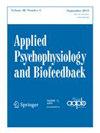Impairments in cardiac vagal control (CVC) have been independently linked to smoking status and depression and are implicated in self-regulatory processes that may exacerbate depressive symptoms and maintain smoking behavior. Yet, few studies have examined how depressive symptoms, even at low levels, influence CVC reactivity among individuals who smoke. Investigating these relationships may provide novel insights into how depressive symptoms exacerbate existing regulatory vulnerabilities among smokers. This study investigated how depression symptoms affect CVC reactivity as a function of changing situational demands among a community sample of 60 daily adult cigarette smokers. Participants completed a mildly demanding cognitive task while physiological data was recorded. Growth curve modeling was used to examine the main and interactive effects of self-reported depressive symptoms on CVC reactivity over the course of the task. We hypothesized that greater depressive symptoms would be associated with less CVC reactivity, characterized by smaller initial reductions in CVC values and a flatter slope over time. Participants were daily smokers with mild to moderate levels of depression. Final model results, where time was specified as linear and the slope was fixed, showed no significant main or interactive effects of time and depression symptoms on CVC reactivity. Findings suggest that at low to moderate levels, depressive symptom severity is not related to patterns of CVC reactivity among adults who smoke. This is the first study to examine this relationship in this population. Future investigations that examine patterns of CVC reactivity among smokers and non-smokers with more severe depression are needed.


